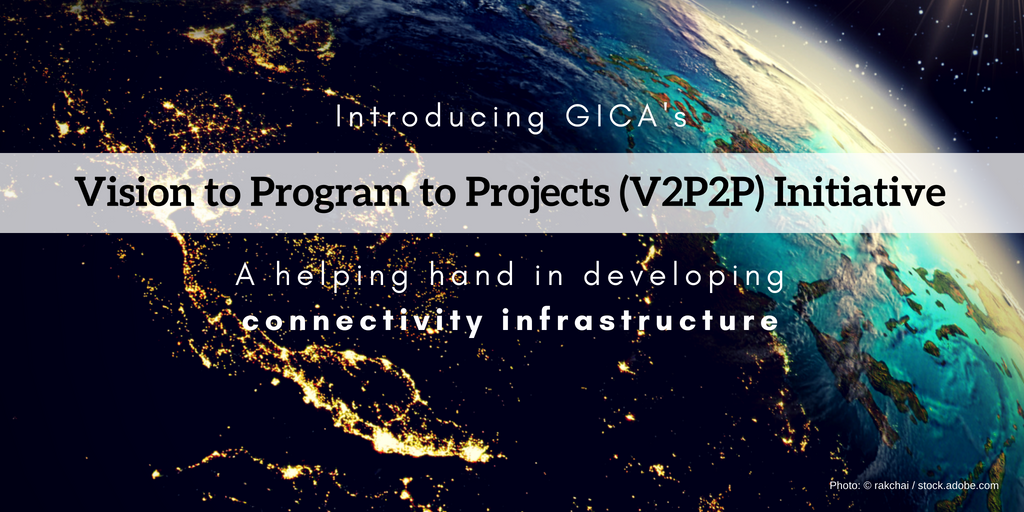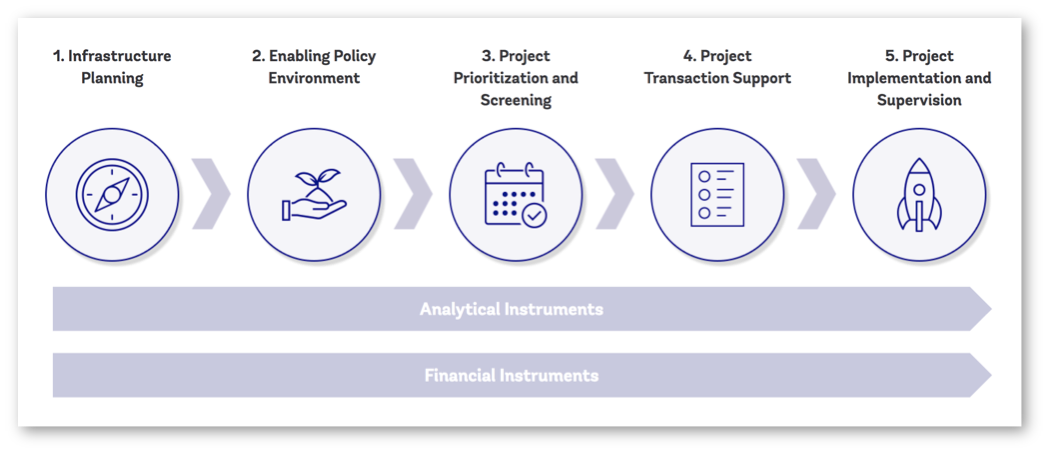
The task of preparing a viable, feasible, and sustainable infrastructure project can be a daunting one filled with many challenges. Throw in the need to incorporate an element of connectivity and the challenges only multiply in number and complexity. Indeed, during the annual meeting of the Global Infrastructure Connectivity Alliance (GICA), held in January 2018 at the OECD headquarters in Paris, GICA members identified several of these challenges, including the need to share best practices, ensure robust project preparation, and address the financing gap.
While multilateral development banks (MDBs) and international financial institutions (IFIs)—including GICA members Asian Infrastructure Investment Bank (AIIB), Eurasian Development Bank (EDB), Asian Development Bank (ADB), and the World Bank Group (WBG)—have the experience and financial or analytical tools to help, actually finding or accessing these resources can be difficult.
Is there a way to bridge this knowledge gap?
Introducing V2P2P
Enter GICA’s Vision to Program to Projects, called “V2P2P” for short. Under V2P2P, we have developed an online resource to help plan and implement connectivity infrastructure through a five-phase framework. This framework is designed to assist policymakers, practitioners, and other sector professionals in navigating through and better managing the process of developing a vision, proceeding to a program and finally, preparing and implementing a project.

Let’s consider the three main elements of V2P2P: Vision, Program, and Projects, and the framework phases related to each.
Vision
Ideally, before even beginning the process of implementing a project, a policymaker considers the “vision,” or the overall government strategy for connectivity. What are the priorities, and why? What can be gained or lost from different policies?
Related framework phases: 1) Infrastructure Planning; and 2) Enabling Policy Environment
Program
Often, projects are undertaken on an ad hoc basis, with little planning or prioritization. However, a programmatic approach involves looking across all of the potential projects and prioritizing them to develop a pipeline of complementary projects that contribute to the overarching vision. In turn, a well-planned program saves on transaction costs while developing transparency and consistency in the market.
Related framework phases: 2) Enabling Policy Environment; and 3) Project Prioritization and Screening
Projects
With a program of projects in place, the next step is to develop these projects. At this stage, qualified transaction advisors work with the government to develop studies and structure the project. Once financial closure is achieved, project monitoring is essential to ensure the construction, operations, and maintenance continue smoothly.
Related framework phases: 4) Project Transaction Support; and 5) Project Implementation and Supervision
V2P2P resources
A vital component of GICA’s mission to support connectivity through cooperation and knowledge exchange, the V2P2P initiative currently offers two products: 1) a database of case studies on connectivity-related programs and projects and 2) a “toolbox” of resources gleaned from GICA members and other thought leaders to help progress connectivity infrastructure projects from inception through to implementation.
First, V2P2P provides curated case studies, organized into regional connectivity programs such as the Greater Mekong Subregion and the European Union, and projects such as airports and cross-border hydroelectric projects. While the regional case studies give examples of how programs can facilitate regional integration and initiate a pipeline of connectivity infrastructure projects, the project case studies showcase how connectivity infrastructure projects can be structured, to encourage private sector participation and bring about successful deal closure.
Second, V2P2P provides a directory of tools offered by GICA members and other MDBs and IFIs to help policymakers mobilize support for preparing and implementing connectivity infrastructure projects. We have organized the tools and products according to five phases of the connectivity infrastructure cycle ( see framework graphic, above), beginning with infrastructure planning then moving through the processes of creating an enabling environment for infrastructure investments, prioritizing projects, and conducting the project transaction—before culminating in project implementation and supervision.
Our collection of V2P2P tools includes technical assistance to develop a connectivity master plan, diagnostics and benchmarks for ensuring an adequate legal and regulatory framework, project development facilities to help structure the transaction, or financial products to help finance the project. The directory also provides successful examples from the field showing how these tools are applied.

The way forward
GICA offers a helping hand in solving common infrastructure connectivity problems. Check back with GICA often, as we will continually update our website with new flagship tools and case studies—and watch for our upcoming V2P2P Project Screening Checklist—to guide your next infrastructure connectivity project to a successful, sustainable implementation.
Share your latest, most helpful resources with GICASecretariat@worldbank.org .




Join the Conversation